381 BREEDING CONFUSION
BREEDING CONFUSION
by David Hancock
 The publication of books like Juliette Cunliffe's The Encyclopaedia of Dog Breeds, Parragon 2000, and Desmond Morris's Dogs--A Dictionary of Dog Breeds, Ebury Press 2001, poses a key question: when is a breed not a breed? Some might argue that to be truly a breed, then kennel club recognition somewhere in the world is a prerequisite. But this would deny us a rich array of terrier and hound breeds, which breed true to type and bear acceptable breed titles, but have never needed kennel club recognition. Fell Terriers and Harriers are more familiar names than Xoloitzcuintlis and Chinooks; the former have no kennel club recognition, the latter two do.
The publication of books like Juliette Cunliffe's The Encyclopaedia of Dog Breeds, Parragon 2000, and Desmond Morris's Dogs--A Dictionary of Dog Breeds, Ebury Press 2001, poses a key question: when is a breed not a breed? Some might argue that to be truly a breed, then kennel club recognition somewhere in the world is a prerequisite. But this would deny us a rich array of terrier and hound breeds, which breed true to type and bear acceptable breed titles, but have never needed kennel club recognition. Fell Terriers and Harriers are more familiar names than Xoloitzcuintlis and Chinooks; the former have no kennel club recognition, the latter two do.
Defining a breed with appropriate words is not entirely straightforward. My own working definition would be: a race of dogs that has been genetically isolated so that each member of that race resembles the others from the same breeding. I don't believe that kennel club recognition is essential for a breed to be regarded as a breed. Breeders of the French packhounds would probably support that view. Some countries have been very forthcoming in obtaining official recognition for their native breeds, the Swiss, for example, over their many hound breeds. But whilst there are six breeds of Dachshund, there is not, unlike the Belgian and Dutch shepherd dog, more than one breed of German shepherd dog.
Yet the old German breed displayed as many coat varieties as its western neighbours and possessed too a pure white sheepdog, as did so many other countries. A wire-haired, shaggy-haired, smooth-coated or whole white German Shepherd Dog might not get official approval nowadays, but the gene pool of the German herding dog included those varieties. Similarly there have been examples of rough-haired and long-haired, or Wheeler, Whippets, and, whilst many have alleged out-crosses to achieve these coats, the Whippet gene pool may well embrace them.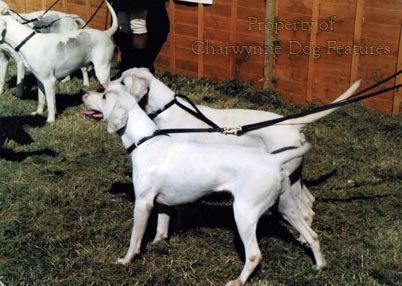
There was uproar a few years ago when a mainly white Bullmastiff cropped up in an American pure-bred litter. There were allegations of a misalliance with an American Bulldog or even a St. Bernard. But I cannot think why; mainly white Mastiffs were once quite common in Britain and that is where the genes come from. The distinguished vet and author Frank Townend Barton once found that his pure-bred Bloodhounds produced a whole white offspring, not an albino. He disposed of it and always regretted losing such genetic diversity. Throwbacks can be valuable breeding material.
I am against the casual recognition of some so-called 'new' breeds, like the Kromfohrlander, but not against the emergence of healthy new hybrids, like the Eurasier. I am against the thoughtless importation of exotic breeds which are better off in their own habitat, like the Abyssinian Sand Dog. I am suspicious of the motives of crafty traders who offer me a Trawler Spaniel but full of admiration for the emergent Plummer Terrier. There is a Trawler Spaniel preserved in the collection at Tring but I doubt if a dwarf Cocker cropping up in a presentday litter constitutes a revival!
Some distinguished breeds owe their existence to a gifted breeder who has worked to a plan and achieved his goal, such as Korthals with his Griffon pointer and Martinez with the Dogo Argentino. But I am wary of tiny gene pools. The Chinook is a sled dog breed derived from one outstanding dog. It demands great breeding skill to continue such a breed successfully. The Albanian Wolfhound on the other hand may never be a recognised breed and doesn't always breed true to type, but has all the virility of our lurchers. I do hope we do not lose the genes of the Dutch Steenbrak and the German Steinbracke, important features in the development of hound breeds in western Europe. 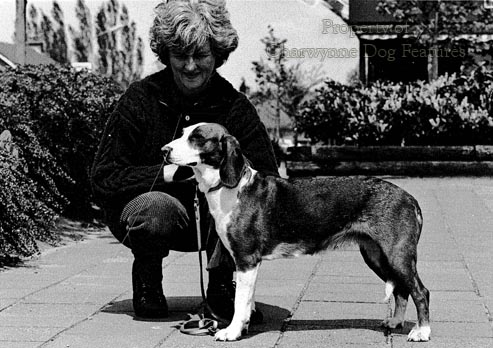
This is one of the dilemmas in the world of dogs in the 21st century: do we value and perpetuate old breeds carrying valuable breeding material or let them fade away? Do we promote the recently developed Moscow Toy Terrier or insist on conserving the Iceland Farm Dog, which has survived centuries in a harsh environment? Do we ignore our native Harrier and patronise the Spanish Hound of a comparable type? Do we favour the Florida Cow Dog, now breeding to a set type, or the German Sauerland Hound of ancient lineage? Should we conserve the Austrian wire-haired Styrian Mountain Hound, which has proved its worth to man, or the long-haired 'sport' of the Chinese Shar Pei on display at Crufts 2002?
Some breeds will undoubtedly disappear unless a group of determined fanciers come together and take charge. But do kennel clubs not have a role in this, especially where native breeds are concerned? The German Short-haired Pointer is a common sight at shows and in the field nowadays in Britain. But when working in Germany I have always been more impressed by the Langhaar and the Stichelhaar than the Kurzhaar. This was also true of the Small Munsterlander, which always impressed me more than the larger variety, but has never attracted British interest. Promoting a particular breed has often had a 'hit or miss' element to it.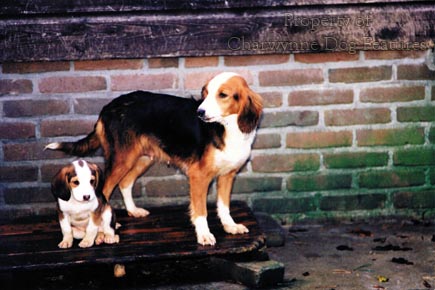
Some distinctive breeds fail to attract interest outside their own territory, remoteness denying exposure. Desmond Morris covered 1000 breeds in his recent book. But he can be forgiven for missing the hairy-footed donkey-herding dog from the thinly-populated Hoxe valley on the Syrian-Turkish border, between Gaziantap and Halab. Believed to spring from drovers' dogs left behind by the Crusaders, DNA sampling has revealed a kinship with the Saarbrucken Schnauzer and the Bouvier de Thionville. The hairy feet are believed to have developed from the need to protect the dogs' feet from the gaultheria bushes which are rampant in the area, attracting wild donkey herds. Pups of this extremely rare breed are now selling for £1,500 through the internet. A club has been formed to conserve this distinctive breed and FCI recognition is awaited.
But hold on, none of this is true, I made it up! No such breed exists. Yet how easy it would be to design a false provenance for some obscure type found in some obscure place. Look at some of the KC-agreed breed histories if you doubt the credibility of my words! Comparable inventiveness has been responsible for the creation of some actual breeds. Is the Magyar Agar really a separate breed from our Greyhound? Does the ear carriage difference between the Norwich and Norfolk Terriers justify their distinct classification as separate breeds? Is the small version of the Portuguese Podengo really a breed or overdue recognition of a village cur?
In South Africa some of the tribal hunting dogs have conformed to a distinct type for centuries but so far no one has claimed breed status for them. The European hawking dog is probably the root of our setter breeds and the epagneul breeds, like the Brittany. But no one ever claimed breed status for it. Time and time again, in books on specific contemporary breeds, the writers claim that in such and such a painting 'their' breed is depicted. Such silliness does little for breed authentication. And why does there have to be speculation over whether a dog rescued by Britsh forces in Afghanistan is a Maremma or a Kangal Dog? Why can't it be an Afghan breed-type for which breed status has never been sought?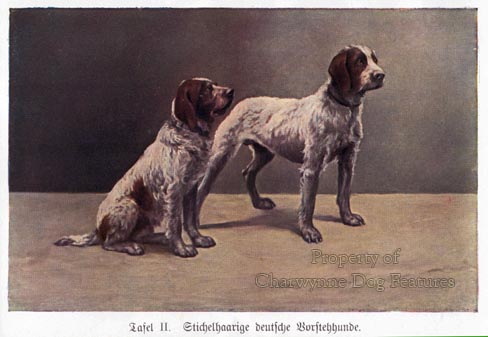
Our own Victorian writers found difficulty in not regarding foreign breeds as having a quite separate development from ours. They even copied each other in debating whether our ancient water-dog, the Curly-coated Retriever, was a Poodle-Whiptail cross, and had little chance of understanding the origin of overseas breeds against that sort of ill-informed reasoning. And, to be fair to them, it is easy to think of the Irish Wheaten Terrier when you first see a Smoushond or an Irish Setter when you first see a Langhaar. But such similarities should serve to remind us that breeds developed from functions. Function often decided the type of coat, the stature, the head shape, the length of leg and therefore the appearance of the dog.
The worry is that in the exhibition of breeds, we concentrate on breed differences and end up exaggerating the coat-length, the shoulder height, the shortness of the muzzle, the length of the ears and the importance of coat colour. All too soon such identified features become components of essential breed type and the function of the breed overlooked. This is never good for a breed. In the past, function always dictated form, to the benefit of the dog; I doubt if show-ring fashion will ever benefit a breed. Every week the dog papers print critiques of judges from dog shows in which the quality of movement is deplored, the shortness of the upper arm decried, the uprightness of the shoulders condemned and the lack of hard condition regretted. This is not good news for purebred dogs. 
I do not know of one breed which still earns its keep in the field and which displays the exaggerations of show ring dogs. The 'Teckels' I watched working in Germany did not feature the elongated backs, abbreviated legs and weak feet of their British show ring counterparts. The snipey muzzles, short backs and upright shoulders of so many show Fox Terriers are not matched in hunt terriers. Springers at trials do not feature the heavy coats favoured in the show ring. Bloodhounds of the packs do not display the ear length and looseness of coat of all too many show Bloodhounds. There should be no confusion here; what does a breed need in order to function? That should be the key question.
In the wake of disasters such as the foot and mouth crisis and in a future which threatens the sporting dog, we could end up one day with sporting and pastoral breeds which lose their functional physique and eventually their breed type too. The show ring already condones exaggerations which are not only alien to a breed but a threat to its well-being. There is a great need for vigilance in some breeds now. In the coming years every breed developed for a purpose will develop differently if that purpose is lost sight of. Showy high-stepping or alternatively, short-stepping dogs, with ears on the ground and untypically heavy coats never featured in the breeds passed on to us by our ancestors.
Recognition of a breed should bring uniformity of type, the chance of better-bred dogs and access to shared expertise. But sadly all too often it brings a closed gene pool, closed minds in breeders and quite needless decline. For any kennel club, home or abroad, to see itself as having a role in the improvement of breeds and then sit on its hands and do nothing when breeds are bred unwisely is contradictory. But when was the last time in any country when the national kennel club spoke up on a breed issue out of concern for that breed? It would be good to be informed of such an instance.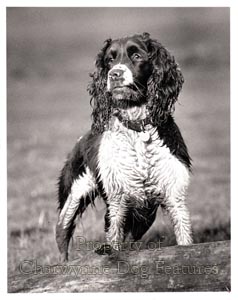
At a time when breed-specific anti-dog legislation is being rightly ridiculed and now campaigned against by our Kennel Club, it is important to recall their role when the dreaded DDA of 1991 was being drafted. It was our KC which advised the Home Office on which breeds should be proscribed here. Commendably they have changed their stance. But if they hadn't advised the Home Office as they did thirteen years ago we would not have had breed-specific legislation here at all. And would that not have influenced our European neighbours? Against that background, how can we trust such a body to safeguard the future of our precious breeds?
It would be unwise and unrealistic however to expect kennel clubs to assume the mantle of breed-protector alone. What are breed clubs for? Most breed clubs would be better named Exhibition Society for that breed, for that seems to preoccupy them. A breed club should have a strong ethical role; the first items on any breed club committee's agenda should be: Breed Health; Breed Rescue; Breed Improvement; three items surely much more challenging, and rewarding, than Judging Appointments; Cups and Trophies and Show Programme. A position with authority means a position with responsibility. But who really is responsible for our precious breeds at the moment?
Unless there is some leadership in saving threatened breeds, guarding true breed type, enhancing breed health and working towards the betterment of the breed, the outlook is gloomy. A combination of eroded breed type, harmful design, poor genetic health and a lack of sound physique is going to undermine a number of breeds; it is never too late to stop and rethink any issue. Surely this one is worthy of our time. British breeds of dog are admired the world over but there is work to be if that wholly desirable situation is to continue.